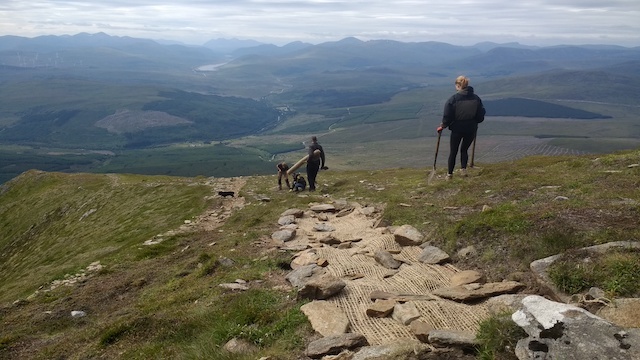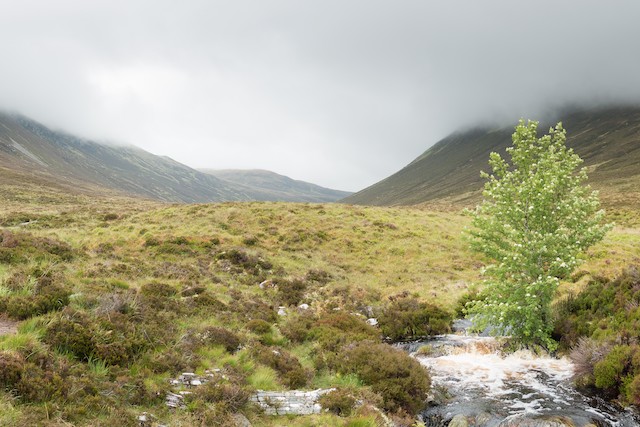Pictured: Ben Wyvis © Ian Sargent NatureScot.
A NatureScot project to improve the condition of rare moss heath on Ben Wyvis National Nature Reserve (NNR) is seeing promising results, but is threatened by damage from illegal disturbance.
NatureScot is urging visitors to help protect this special habitat by avoiding the areas where moss is being restored and staying on existing routes along the summit.
Unfortunately, there has been recent reports of damage caused by illegal motorbikes.
Hikers going off the main trail can also damage this sensitive habitat.
The NNR’s proximity to Inverness makes it a popular Munro for both locals and visitors, with stunning views of the Ross-shire hills and the Cromarty Firth from the summit.
Visitors may spot mountain specialists such as dotterel, ptarmigan and mountain hare, and possibly even a soaring golden eagle.
Ben Wyvis has one of the longest single tracts of alpine moss heath in the U.K.
The habitat on the summit plateau is sensitive to damage from visitors and may take a long time to recover.
This carpet of spongy moss is a collection of plant species – dominated by the silvery woolly-fringe moss – which can tolerate the harsh, exposed environment of the high plateau.
However, this sensitive habitat is often replaced by bare ground in places where footfall is especially high.
Restoration involves transplanting plugs of moss heath vegetation from undamaged donor areas into areas of bare ground, and protecting them with a layer of biodegradable hessian fabric held down with stones.

The survival and recovery of these transplant sites are monitored and the results so far are generally positive.
There is evidence to support a wider roll out of this method of restoration which would help to re-vegetate many of the paths that have formed along the plateau and try to focus hill walkers onto one main path.
Doug Bartholomew, the NatureScot reserve manager at Ben Wyvis, said:
“We’re really pleased to see the condition of the moss improving.
“But it’s easily damaged, so we’d ask visitors to be responsible and play their part in protecting this special place.
“The best thing to do is to try to stay on the main path, especially along the summit, as this really helps to minimise our impact.
“It also helps to avoid any areas with the hessian fabric and large rocks to allow those areas to recover.
“Ben Wyvis is somewhere that so many people enjoy, and it’s crucial that we protect its many irreplaceable habitats and wildlife.”
Murdo Maclennan, Forestry and Land Scotland (FLS) Forest Management & Stewardship Forester in the area, added:
“It is illegal under the Scottish Outdoor Access Code to take motorised vehicles into the NNR.
“Riders and drivers who ignore the restrictions can cause significant damage to habitats that can take years to heal and can also disturb wildlife – especially ground nesting birds, some of which are of international importance.”
“The irresponsible people who engage in this anti-social activity are also a hazard to visitors, our staff and even to themselves.
“We are working with Police Scotland and NatureScot to tackle the issue and would ask any members of the public who witness this kind of activity to report it to Police Scotland on 101.”
Visitors should be aware that the car park is quite small and may be full on busy days, so they should have a ‘plan B’.
If the car park is full, go elsewhere, as parking on the verge is dangerous for road users and local people accessing their properties.



